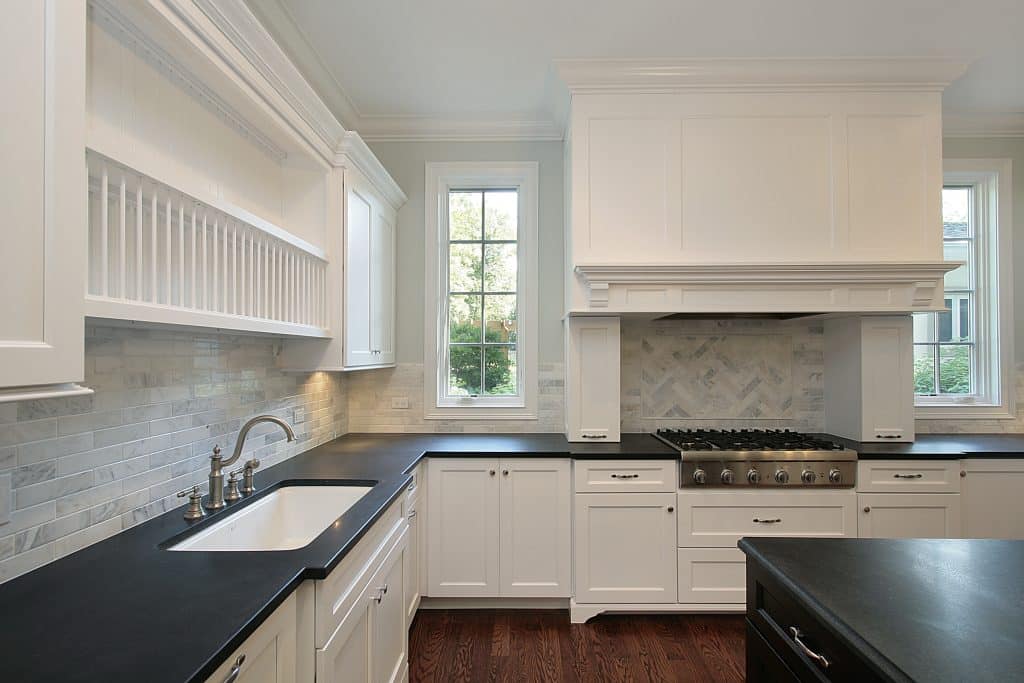Marble countertops have long been a top choice for homeowners who want a combination of elegance, durability, and natural beauty. Whether you’re upgrading your kitchen or remodeling your bathroom, marble provides a high-end look that enhances any space. But once you decide on marble, you still have another important choice to make—honed or polished?

These two finishes affect not only the look of your countertops but also their maintenance, durability, and feel. To help you decide which option best suits your home, let’s break down the differences, benefits, and potential drawbacks of honed vs. polished marble countertops.
What Is Honed Marble?
Honed marble has a matte, velvety surface rather than a glossy, reflective finish. This look is achieved by grinding and smoothing the stone, but without the final polishing step. Instead of a high-gloss appearance, honed marble has a soft, satin-like texture that absorbs light rather than reflecting it.
This finish is popular for those who want a more natural and subdued look. It’s commonly used in bathrooms, high-traffic areas, and homes with kids or pets because of its durability and slip resistance.
Pros of Honed Marble Countertops
- Scratch Resistance – Because honed marble lacks a high-gloss finish, scratches and etch marks are less noticeable. This makes it a great option for busy kitchens and bathrooms.
- Slip Resistance – Honed marble has a textured, non-slippery surface, making it a safer choice for bathroom vanities, shower walls, and floors.
- Timeless Aesthetic – The soft, matte look of honed marble creates a sophisticated and understated elegance that blends well with both modern and traditional designs.
Cons of Honed Marble Countertops
- Prone to Staining – Honed marble is more porous than polished marble, meaning it can absorb liquids and stain more easily if spills aren’t wiped up quickly.
- Requires Frequent Sealing – Because of its absorbent nature, honed marble needs to be sealed regularly (at least once or twice a year) to prevent moisture and stains from penetrating the surface.
- Less Reflective – While some homeowners love the matte look, others prefer a glossy, light-reflecting surface. If you want a bright, high-shine finish, honed marble might not be your best choice.
What Is Polished Marble?
Polished marble is honed marble that has undergone an additional polishing process to achieve a glossy, mirror-like finish. This extra step brings out the natural colors and veining of the stone, giving it a luxurious and high-end appearance.
Polished marble is a great option for those who want a sophisticated, upscale look in their kitchen or bathroom, as well as those who prioritize stain resistance.
Pros of Polished Marble Countertops
- Stain Resistance – The polishing process naturally seals the marble, making it more resistant to moisture, spills, and stains. This is especially helpful in kitchens where spills are common.
- Bright and Elegant Appearance – Polished marble reflects light, making smaller spaces feel bigger and more open. If you want a high-end, glamorous feel, this is the way to go.
- Easier to Clean – Since polished marble repels liquids and dust, it’s easier to wipe clean with minimal effort.
Cons of Polished Marble Countertops
- Scratches and Etching Are More Visible – The glossy surface shows scratches and water marks more easily, which means you’ll need to be careful with sharp objects and acidic substances.
- Slippery When Wet – The smooth, polished finish becomes slick when wet, making it less ideal for bathroom floors or high-moisture areas.
- Higher Maintenance for a Flawless Look – To keep its shine, polished marble may require periodic buffing or resealing every few years.
Honed vs. Polished Marble: Which One Should You Choose?
Both honed and polished marble are beautiful and functional, but your choice depends on where and how you plan to use the stone. Here are some things to consider:
For Kitchen Countertops
- Best option: Polished marble
- Why? It resists stains better, making it easier to clean up food spills and splashes. Plus, its shiny surface brightens up the space.
For Bathroom Vanities & Showers
- Best option: Honed marble
- Why? The matte finish makes water spots and soap residue less visible, and it’s safer in wet areas because it’s less slippery.
For High-Traffic Areas
- Best option: Honed marble
- Why? It hides scratches better and doesn’t show as much wear and tear over time.
For a Luxurious, Elegant Look
- Best option: Polished marble
- Why? The glossy finish enhances the natural beauty of the stone and adds a high-end, glamorous touch to any space.
Is Honed Marble More Expensive Than Polished?
Marble pricing varies based on the type, color, and rarity of the stone. However, honed and polished marble typically cost about the same per square foot.
The real cost difference comes in maintenance:
- Honed marble requires more frequent sealing (which adds to upkeep costs).
- Polished marble may require occasional buffing or scratch repairs (depending on use).
If you plan to install marble in a high-use area like a kitchen, the lower maintenance of polished marble might save you money in the long run.
Caring for Your Marble Countertops
Regardless of whether you choose honed or polished marble, proper care will keep your countertops looking beautiful for years:
- Seal Regularly – Use a high-quality marble sealer to protect against stains and moisture.
- Clean with pH-Neutral Cleaners – Avoid harsh chemicals or acidic substances like vinegar and citrus, as they can etch the surface.
- Use Coasters & Trivets – Prevent water rings, stains, and heat damage by using coasters under drinks and trivets under hot cookware.
- Wipe Up Spills Immediately – Especially for honed marble, quick clean-ups prevent stains from setting in.
Choosing the Right Marble Finish for Your Home
Both honed and polished marble offer distinct benefits, and the right choice depends on your lifestyle, aesthetic preferences, and how much maintenance you’re willing to commit to.
If you want a soft, classic, and durable surface for high-traffic areas, honed marble is the way to go. If you prefer a bright, luxurious look that’s easier to clean, polished marble is a great fit.
Looking for Expert Guidance?
If you’re ready to explore high-quality marble countertops for your home, Wholesale Granite Direct is here to help. Our team serves Arlington, TX, and Granbury, TX, offering expert installation and a wide selection of marble countertops. Call us today at 817-962-2616 (Arlington) or 817-710-8604 (Granbury) to get started!

